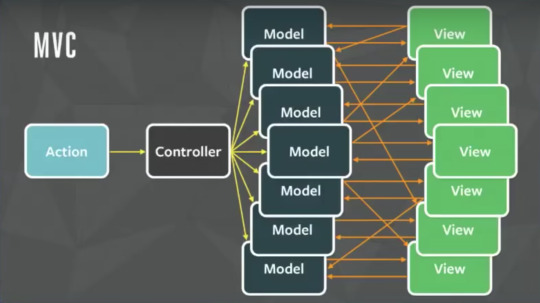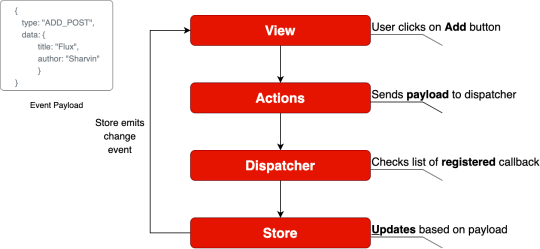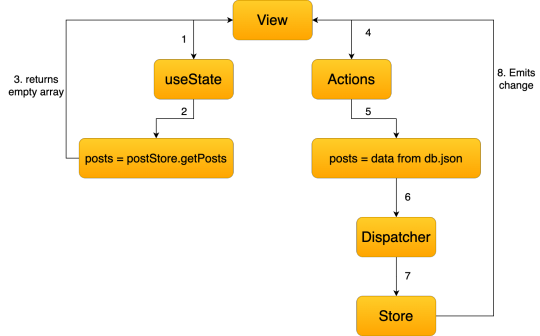#complete notes on emberjs
Explore tagged Tumblr posts
Text
complete notes on emberjs

complete notes on ember.js, complete notes on emberjs, complete tutorials on ember.js, complete tutorials on emberjs, ember.js notes, ember.js questions asked in companies, ember.js questions asked in interview, ember.js questions asked in mnc, ember.js questions for interview, ember.js tutorials, emberjs notes, emberjs questions asked in companies, emberjs questions asked in interview, emberjs questions asked in mnc, emberjs questions for interview, emberjs tutorials, faq for ember.js, faq for emberjs, faq on ember.js, faq on emberjs, interview questions on ember.js, interview questions on emberjs, latest interview questions on ember.js, latest interview questions on emberjs, most asked ember.js interview questions, most asked emberjs interview questions, notes on ember.js, notes on emberjs, rapid fire on ember.js, rapid fire on emberjs, rapid fire questions on ember.js, rapid fire questions on emberjs, top interview questions on ember.js, top interview questions on emberjs, tutorials on ember.js, tutorials on emberjs, updated interview questions answers on ember.js, updated interview questions answers on emberjs, ember.js interview questions
0 notes
Link
If you have started working on ReactJS recently then you might be wondering how to manage state in React so that your application can scale. To solve this state management issue, many companies and people have developed various solutions. Facebook, who developed ReactJS, came up with a solution called Flux. You may have heard about Redux if you have worked on front end technology such as AngularJS or EmberJS. ReactJS also has a library for implementing Redux. But before learning Redux I would advise you to go through Flux and understand it. After that give Redux a try. I say this because Redux is a more advanced version of Flux. If the concepts of Flux are clear then you can learn redux and integrate it into your application.
What is flux?
Flux uses a unidirectional data flow pattern to solve state management complexity. Remember it is not a framework – rather it's more of a pattern that targets to solve the state management issue. Are you wondering what's wrong with the existing MVC framework? Imagine your client's application scales up. You have interaction between many models and views. How would it look?

Credit: Image from Facebook F8 Flux Event
The relationship between components gets complicated. It becomes hard to scale the application. Facebook faced the same issue. To solve this issue they architected a Single directional data flow.

Credit: Image from Facebook's Flux Doc
As you can see from the image above, there are a lot of components used in Flux. Let's go through all the components one by one. View: this component renders the UI. Whenever any user interaction occurs on it (like an event) then it fires off the action. Also when the Store informs the View that some change has occurred, it re-renders itself. For example, if a user clicks the Add button. Action: this handles all the events. These events are passed by the view component. This layer is generally used to make API calls. Once the action is done it is dispatched using the Dispatcher. The action can be something like add a post, delete a post, or any other user interaction. The common structure of the payload for dispatching an event is as follows:
{ actionType: "", data: { title: "Understanding Flux step by step", author: "Sharvin" } }
The actionType key is compulsory and it is used by the dispatcher to pass updates to the related store. It is also a known practice to use constants to hold the value name for actionType key so no typos occur. Data holds the event information that we want to dispatch from Action to Store. The name for this key can be anything. Dispatcher: this is the central hub and singleton registry. It dispatches the payload from Actions to Store. Also makes sure that there are no cascading effects when an action is dispatched to the store. It ensures that no other action happens before the data layer has completed processing and storing operations. Consider this component has a traffic controller in the system. It is a centralized list of callbacks. It invokes the callback and broadcasts the payload it received from the action. Due to this component, the data flow is predictable. Every action updates the specific store with the callback that is registered with the dispatcher. Store: this holds the app state and is a data layer of this pattern. Do not consider it as a model from MVC. An application can have one or many app stores. Stores get updated because they have a callback that is registered using the dispatcher. Node's event emitter is used to update the store and broadcast the update to view. The view never directly updates the application state. It is updated because of the changes to the store. This is only part of Flux that can update the data. Interfaces implemented in the store are as follows:
The EventEmitter is extended to inform the view that store data has been updated.
Listeners like addChangeListener and removeChangeListener are added.
emitChange is used to emit the change.
Consider the above diagram with more stores and views. Still, the pattern and the flow of data will be the same. This is because this is a single direction and predictable data flow, unlike MVC or Two-way binding. This improves the data consistency and it's easier to find the bug.

Flux Data Flow
Well, Flux brings the following key benefits to the table with the help of unidirectional data flow:
The code becomes quite clear and easy to understand.
Easily testable using Unit Test.
Scalable apps can be built.
Predictable data flow.
Note: The only drawback with the Flux is that there is some boilerplate that we need to write. Besides the boilerplate, there is little code we need to write when adding components to the existing application.
Application Template
To learn how to implement flux in ReactJS, we will build a Posts page. Here we will display all the posts. The application template is available at this commit. We will use this as the template for integrating Flux on top of it. To clone the code from this commit, use the following command:
git clone https://github.com/Sharvin26/DummyBlog.git
git checkout 0d56987b2d461b794e7841302c9337eda1ad0725
We will require a react-router-dom and bootstrap module. To install these packages, use the following command:
npm install [email protected] [email protected]
Once done you'll see the following application:

DummyBlog
To understand Flux in detail we will only implement the GET posts page. Once that is done you'll realize the process is the same for POST, EDIT and DELETE. Here you'll see the following directory structure:
+-- README.md +-- package-lock.json +-- package.json +-- node_modules +-- .gitignore +-- public | +-- index.html +-- src | +-- +-- components | +-- +-- +-- common | +-- +-- +-- +-- NavBar.js | +-- +-- +-- PostLists.js | +-- +-- pages | +-- +-- +-- Home.js | +-- +-- +-- NotFound.js | +-- +-- +-- Posts.js | +-- index.js | +-- App.js | +-- db.json
Note: We have added here a db.json file. This is a dummy data file. Since we don't want to build APIs and instead focus on Flux, we will retrieve the data from this file.
Our Application's base component is index.js. Here we have rendered the App.js inside the index.html under public directory using the render and getElementById methods. The App.js is used for configuring the routes. We are also adding NavBar component at the top of the other so it will be available for all the components. Inside the pages directory we have 3 files => Home.js, Posts.js, and NotFound.js. Home.js is simply used to display the Home component. When a user routes to a URL which doesn't exist, then NotFound.js renders. The Posts.js is the parent component and it is used to get the data from the db.json file. It passes this data to the PostLists.js under the components directory. This component is a dumb component and it only handles the UI. It gets the data as props from its parent component (Posts.js) and displays it in the form of cards. Now that we are clear about how our blog app is working we will start with integrating Flux on top of it.
Integrating Flux
Install Flux using the following command:
npm install [email protected]
To integrate Flux in our application we will divide this section into 4 subsections:
Dispatcher
Actions
Stores
View
Note: The complete code is available at this repository.
Dispatcher
First, create two new folders named actions and stores under the src directory. After that create a file named appDispatcher.js under the same src directory. Note: From now all the files which are related to Flux will have Camel casing as they are not ReactJS components. Go to the appDispatcher.js and copy-paste the following code:
import { Dispatcher } from "flux"; const dispatcher = new Dispatcher(); export default dispatcher;
Here we are importing the Dispatcher from the flux library that we installed, creating a new object and exporting it so that our actions module can use it.
Actions
Now go to the actions directory and create two files named actionTypes.js and postActions.js. In the actionTypes.js we will define the constants that we require in postActions.js and store module. The reason behind defining constants is that we don't want to make typos. You don't have to define constants but it is generally considered a good practice.
// actionTypes.js export default { GET_POSTS: "GET_POSTS", };
Now inside the postActions.js, we will retrieve the data from db.json and use the dispatcher object to dispatch it.
//postActions.js import dispatcher from "../appDispatcher"; import actionTypes from "./actionTypes"; import data from "../db.json"; export function getPosts() { dispatcher.dispatch({ actionTypes: actionTypes.GET_POSTS, posts: data["posts"], }); }
Here in the above code, we have imported the dispatcher object, actionTypes constant, and data. We are using a dispatcher object's dispatch method to send the data to the store. The data in our case will be sent in the following format:
{ actionTypes: "GET_POSTS", posts: [ { "id": 1, "title": "Hello World", "author": "Sharvin Shah", "body": "Example of blog application" }, { "id": 2, "title": "Hello Again", "author": "John Doe", "body": "Testing another component" } ] }
Stores
Now we need to build the store which will act as a data layer for storing the posts. It will have an event listener to inform the view that something has changed, and will register using dispatcher with the actions to get the data. Go to the store directory and create a new file called postStore.js. Now first, we will import EventEmitter from the Events package. It is available in the NodeJS by default. We will also import the dispatcher object and actionTypes constant file here.
import { EventEmitter } from "events"; import dispatcher from "../appDispatcher"; import actionTypes from "../actions/actionTypes";
We will declare the constant of the change event and a variable to hold the posts whenever the dispatcher passes it.
const CHANGE_EVENT = "change"; let _posts = [];
Now we will write a class that extends the EventEmitter as its base class. We will declare the following methods in this class: addChangeListener: It uses the NodeJS EventEmitter.on. It adds a change listener that accepts the callback function. removeChangeListener: It uses the NodeJS EventEmitter.removeListener. Whenever we don't want to listen for a specific event we use the following method. emitChange: It uses the NodeJS EventEmitter.emit. Whenever any change occurs, it emits that change. This class will also have a method called getPosts which returns the variable _posts that we have declared above the class. Below the variable declaration add the following code:
class PostStore extends EventEmitter { addChangeListener(callback) { this.on(CHANGE_EVENT, callback); } removeChangeListener(callback) { this.removeListener(CHANGE_EVENT, callback); } emitChange() { this.emit(CHANGE_EVENT); } getPosts() { return _posts; } }
Now create the store object of our PostStore class. We will export this object so that we can use it in the view.
const store = new PostStore();
After that, we will use the dispatcher's register method to receive the payload from our Actions component. To register for the specific event, we need to use the actionTypes value and determine which action has occurred and process the data accordingly. Add the following code below the object declaration:
dispatcher.register((action) => { switch (action.actionTypes) { case actionTypes.GET_POSTS: _posts = action.posts; store.emitChange(); break; default: } });
We will export the object from this module so others can use it.
export default store;
View
Now we will update our view to send the event to postActions whenever our Posts page is loaded and receive the payload from the postStore. Go to Posts.js under the pages directory. You'll find the following code inside the useEffect method:
useEffect(() => { setposts(data["posts"]); }, []);
We will change how our useEffect reads and updates the data. First, we will use the addChangeListener method from the postStore class and we will pass an onChange callback to it. We will set the posts state value to have a return value of the getPosts method from the postStore.js file. At the start, the store will return an empty array as there is no data available. So we will call a getPosts method from the postActions.js. This method will read the data and pass it to the store. Then the store will emit the change and addChangeListener will listen to the change and update the value of the posts in its onChange callback. If this seems confusing don't worry – check out the flow chart below which makes it easier to understand.

Remove the old code and update the following code inside Posts.js:
import React, { useState, useEffect } from "react"; import PostLists from "../components/PostLists"; import postStore from "../stores/postStore"; import { getPosts } from "../actions/postActions"; function PostPage() { const [posts, setPosts] = useState(postStore.getPosts()); useEffect(() => { postStore.addChangeListener(onChange); if (postStore.getPosts().length === 0) getPosts(); return () => postStore.removeChangeListener(onChange); }, []); function onChange() { setPosts(postStore.getPosts()); } return ( <div> <PostLists posts={posts} /> </div> ); } export default PostPage;
Here you'll find that we have also removed the import and also we are using setPosts inside our callback instead of useEffect method. The return () => postStore.removeChangeListener(onChange); is used to remove the listener once the user leaves that page. With this go to the Blog Page and you'll find that our blog app is working. The only difference is that now instead of reading the data in the useEffect method we are reading it in actions, storing it in the store, and sending it to the components that require it. When using the actual API you'll find that the application loads the data from the API one time and stores it in the store. When we revisit the same page you'll observe that no API call is required again. You can monitor it under the source tab in Chrome Developer console. And we're done!! I hope this tutorial has made the idea of Flux clearer and you'll be able to use it in your projects.
0 notes
Text
60% off #In Depth Web Development Made Easy – $10
Learn how to see web development as a puzzle, where you’re just fitting the pieces together.
6.5 hours, – 4 coding exercises, 60 lectures
Average rating 4.2/5 (4.2 (26 ratings) Instead of using a simple lifetime average, Udemy calculates a course’s star rating by considering a number of different factors such as the number of ratings, the age of ratings, and the likelihood of fraudulent ratings.)
Course requirements:
No prior knowledge of HTML, CSS, JavaScript, or Photoshop/Paint is needed.
Course description:
One of the most problematic things about learning Web Development is that Teachers tend to only cover just enough to get you through. This course is about learning Web Development and obtaining a full understanding of all three languages. I take a more direct approach, teaching you nearly all of the syntax and helping you understand why they exist by delving into some of the history about Web Development, and then I reinforce this with quizzes after every 5 videos along with several Code-Along Projects.
Each video is so simplified that there is no need to constantly check for the code in the downloads page. Each Part is a full list of Syntax from W3C, the makers of HTML5 and CSS3, so that almost No Syntax is missed. We go over each one and I give you the simplified explanation of what the syntax does and how to use it or why it is used.
As my Students from Learn The Quickest Way for Writing a Book that I use can tell you, I take students seriously. I respond within a day and, if it’s a problem I think other students may have, I create an entire video just for that one problem.
This course will be included inside of each bigger language that I cover, Ruby, C#, Python, and Nodejs. If you have taken multiple Web Development courses and some of the information just doesn’t seem to stick, then this is likely the perfect course for you. So, c’mon and join me in learning how to develop websites from scratch!
Full details Find multiple solutions to web development problems with ease. Identify nearly all syntax in basic web development with a good understanding of what each one does. Gain a thorough understand of JavaScript so that learning EmberJs and jQuery is easier. This Web Development course is for both beginning developers and intermediate developers wanting to fully understand the basics of Web Development in both programing and the actual history of Web Development. This course covers both commonly used HTML elements and even notes outdated syntax to prepare developers for what they may have to fix in the future. This course is for those who are looking for a quality Web Development course at a low price.
Full details
Reviews:
“Good idea to start by the history of internet and how develop during the past years” (marouane MHAIDI)
“Very comprehensive and well organized course” (Abdul Mannan)
“Was looking for a course exactly like this. Good pace, good content and excellent presentation.” (Muhammad Bilal)
About Instructor:
Tommy Mertell Muhammad Uzair Khalid
I am a Freelance Developer with more than 10 years of experience, having started in Web Development when MySpace was still popular and 2D graphics were the kings of free gaming. I am also an Author of a few novels and a Ghost Writer for more novels than I can account for. From developing websites to making video games, there’s not a coding object that I haven’t done before. I have worked with Victor Bastos on his OnClick Academy platform and am CTO of the SQRent start-up, a platform that believes experience is more important than just a fancy piece of paper. I participate on CodeEval for fun, when I’m not working or helping others with web development. I came on Udemy to provide a way for others to seek out my help and I very much enjoy helping others, because, occasionally, there’s a challenge in it for myself. As a freelance writer on Elance, I’m raved and praised about for my speed, intuitiveness, and quality. I have a 4.9 rating and have worked with hundreds of clients on projects ranging from The Theoretical Design of Biomedical Psychology to The Difference Between English and American Bulldogs. I have been interviewed by Elance as one of the most prominent freelancers on Elance several times, given several writing awards over the years, and have proven time-and-again that Colleges are an outdated and dying form of education. I tend to quickly learn anything that I get my hands on, from writing movie scripts to developing Node(js) chat boxes for secure and private communications using a 256-bit Encryption connection. I’ve decided to leave the industry of freelance writing and fully immerse myself in the market for web development. With more than a decade of experience in Web Development, I believe it is my responsibility to help usher in new developers and help them understand both the history and process of web development.
Muhammad completed his Bachelors in Electrical Engineering from one of the most prestigious universities of Pakistan. At the age of 21, he teamed up with one of his friends to launch their start-up called BioPie. They introduced an innovative non-invasive product that monitored blood glucose level in diabetic patients without penetrating the skin. At that time, glucose monitoring for diabetic patients was done via invasive methods. This product bagged several national level awards. In 2014, Muhammad got a foreign scholarship to continue his studies in Finland, where he opted to do Masters of science (Msc) in Biomedical Engineering. Currently, he is working with Computation Biophysics Imaging Research Group, where his task is to model the calcium ions flow in Astrocytes (brain cells). Muhammad has also been working as a freelance technical writer for past 3 years, and has worked with approximately 100 clients from across the globe, on 150+ projects. He has been extremely motivated towards timely completion of projects with high quality work, and this has led to a very high client repetition rate. Apart from this, Muhammad is fond of programming (logic development), sports and traveling. He has also represented his country (Pakistan) in two Cricket tournaments held in Finland.
Instructor Other Courses:
Ruby on Rails: The Complete Full Stack Tommy Mertell, Ghost Writer and Ruby Web Developer (18) $10 $70 Learn How I Write A Movie Script within a Month Tommy Mertell, Ghost Writer and Ruby Web Developer (5) $10 $20 Learn The Quickest Way For Writing a Book that I use Ruby on Rails: The Complete Full Stack …………………………………………………………… Tommy Mertell Muhammad Uzair Khalid coupons Development course coupon Udemy Development course coupon Web Development course coupon Udemy Web Development course coupon In Depth Web Development Made Easy In Depth Web Development Made Easy course coupon In Depth Web Development Made Easy coupon coupons
The post 60% off #In Depth Web Development Made Easy – $10 appeared first on Course Tag.
from Course Tag http://coursetag.com/udemy/coupon/60-off-in-depth-web-development-made-easy-10/ from Course Tag https://coursetagcom.tumblr.com/post/157978702928
0 notes
Text
ember.js notes

complete notes on ember.js, complete notes on emberjs, complete tutorials on ember.js, complete tutorials on emberjs, ember.js notes, ember.js questions asked in companies, ember.js questions asked in interview, ember.js questions asked in mnc, ember.js questions for interview, ember.js tutorials, emberjs notes, emberjs questions asked in companies, emberjs questions asked in interview, emberjs questions asked in mnc, emberjs questions for interview, emberjs tutorials, faq for ember.js, faq for emberjs, faq on ember.js, faq on emberjs, interview questions on ember.js, interview questions on emberjs, latest interview questions on ember.js, latest interview questions on emberjs, most asked ember.js interview questions, most asked emberjs interview questions, notes on ember.js, notes on emberjs, rapid fire on ember.js, rapid fire on emberjs, rapid fire questions on ember.js, rapid fire questions on emberjs, top interview questions on ember.js, top interview questions on emberjs, tutorials on ember.js, tutorials on emberjs, updated interview questions answers on ember.js, updated interview questions answers on emberjs, ember.js interview questions
0 notes
Text
ember.js interview questions

complete notes on ember.js, complete notes on emberjs, complete tutorials on ember.js, complete tutorials on emberjs, ember.js notes, ember.js questions asked in companies, ember.js questions asked in interview, ember.js questions asked in mnc, ember.js questions for interview, ember.js tutorials, emberjs notes, emberjs questions asked in companies, emberjs questions asked in interview, emberjs questions asked in mnc, emberjs questions for interview, emberjs tutorials, faq for ember.js, faq for emberjs, faq on ember.js, faq on emberjs, interview questions on ember.js, interview questions on emberjs, latest interview questions on ember.js, latest interview questions on emberjs, most asked ember.js interview questions, most asked emberjs interview questions, notes on ember.js, notes on emberjs, rapid fire on ember.js, rapid fire on emberjs, rapid fire questions on ember.js, rapid fire questions on emberjs, top interview questions on ember.js, top interview questions on emberjs, tutorials on ember.js, tutorials on emberjs, updated interview questions answers on ember.js, updated interview questions answers on emberjs, ember.js interview questions
0 notes
Text
updated interview questions answers on ember.js

complete notes on ember.js, complete notes on emberjs, complete tutorials on ember.js, complete tutorials on emberjs, ember.js notes, ember.js questions asked in companies, ember.js questions asked in interview, ember.js questions asked in mnc, ember.js questions for interview, ember.js tutorials, emberjs notes, emberjs questions asked in companies, emberjs questions asked in interview, emberjs questions asked in mnc, emberjs questions for interview, emberjs tutorials, faq for ember.js, faq for emberjs, faq on ember.js, faq on emberjs, interview questions on ember.js, interview questions on emberjs, latest interview questions on ember.js, latest interview questions on emberjs, most asked ember.js interview questions, most asked emberjs interview questions, notes on ember.js, notes on emberjs, rapid fire on ember.js, rapid fire on emberjs, rapid fire questions on ember.js, rapid fire questions on emberjs, top interview questions on ember.js, top interview questions on emberjs, tutorials on ember.js, tutorials on emberjs, updated interview questions answers on ember.js, updated interview questions answers on emberjs, ember.js interview questions
0 notes
Text
tutorials on ember.js

complete notes on ember.js, complete notes on emberjs, complete tutorials on ember.js, complete tutorials on emberjs, ember.js notes, ember.js questions asked in companies, ember.js questions asked in interview, ember.js questions asked in mnc, ember.js questions for interview, ember.js tutorials, emberjs notes, emberjs questions asked in companies, emberjs questions asked in interview, emberjs questions asked in mnc, emberjs questions for interview, emberjs tutorials, faq for ember.js, faq for emberjs, faq on ember.js, faq on emberjs, interview questions on ember.js, interview questions on emberjs, latest interview questions on ember.js, latest interview questions on emberjs, most asked ember.js interview questions, most asked emberjs interview questions, notes on ember.js, notes on emberjs, rapid fire on ember.js, rapid fire on emberjs, rapid fire questions on ember.js, rapid fire questions on emberjs, top interview questions on ember.js, top interview questions on emberjs, tutorials on ember.js, tutorials on emberjs, updated interview questions answers on ember.js, updated interview questions answers on emberjs, ember.js interview questions
0 notes
Text
top interview questions on ember.js

complete notes on ember.js, complete notes on emberjs, complete tutorials on ember.js, complete tutorials on emberjs, ember.js notes, ember.js questions asked in companies, ember.js questions asked in interview, ember.js questions asked in mnc, ember.js questions for interview, ember.js tutorials, emberjs notes, emberjs questions asked in companies, emberjs questions asked in interview, emberjs questions asked in mnc, emberjs questions for interview, emberjs tutorials, faq for ember.js, faq for emberjs, faq on ember.js, faq on emberjs, interview questions on ember.js, interview questions on emberjs, latest interview questions on ember.js, latest interview questions on emberjs, most asked ember.js interview questions, most asked emberjs interview questions, notes on ember.js, notes on emberjs, rapid fire on ember.js, rapid fire on emberjs, rapid fire questions on ember.js, rapid fire questions on emberjs, top interview questions on ember.js, top interview questions on emberjs, tutorials on ember.js, tutorials on emberjs, updated interview questions answers on ember.js, updated interview questions answers on emberjs, ember.js interview questions
0 notes
Text
rapid fire questions on emberjs

complete notes on ember.js, complete notes on emberjs, complete tutorials on ember.js, complete tutorials on emberjs, ember.js notes, ember.js questions asked in companies, ember.js questions asked in interview, ember.js questions asked in mnc, ember.js questions for interview, ember.js tutorials, emberjs notes, emberjs questions asked in companies, emberjs questions asked in interview, emberjs questions asked in mnc, emberjs questions for interview, emberjs tutorials, faq for ember.js, faq for emberjs, faq on ember.js, faq on emberjs, interview questions on ember.js, interview questions on emberjs, latest interview questions on ember.js, latest interview questions on emberjs, most asked ember.js interview questions, most asked emberjs interview questions, notes on ember.js, notes on emberjs, rapid fire on ember.js, rapid fire on emberjs, rapid fire questions on ember.js, rapid fire questions on emberjs, top interview questions on ember.js, top interview questions on emberjs, tutorials on ember.js, tutorials on emberjs, updated interview questions answers on ember.js, updated interview questions answers on emberjs, ember.js interview questions
0 notes
Text
rapid fire questions on ember.js

complete notes on ember.js, complete notes on emberjs, complete tutorials on ember.js, complete tutorials on emberjs, ember.js notes, ember.js questions asked in companies, ember.js questions asked in interview, ember.js questions asked in mnc, ember.js questions for interview, ember.js tutorials, emberjs notes, emberjs questions asked in companies, emberjs questions asked in interview, emberjs questions asked in mnc, emberjs questions for interview, emberjs tutorials, faq for ember.js, faq for emberjs, faq on ember.js, faq on emberjs, interview questions on ember.js, interview questions on emberjs, latest interview questions on ember.js, latest interview questions on emberjs, most asked ember.js interview questions, most asked emberjs interview questions, notes on ember.js, notes on emberjs, rapid fire on ember.js, rapid fire on emberjs, rapid fire questions on ember.js, rapid fire questions on emberjs, top interview questions on ember.js, top interview questions on emberjs, tutorials on ember.js, tutorials on emberjs, updated interview questions answers on ember.js, updated interview questions answers on emberjs, ember.js interview questions
0 notes
Text
rapid fire on ember.js

complete notes on ember.js, complete notes on emberjs, complete tutorials on ember.js, complete tutorials on emberjs, ember.js notes, ember.js questions asked in companies, ember.js questions asked in interview, ember.js questions asked in mnc, ember.js questions for interview, ember.js tutorials, emberjs notes, emberjs questions asked in companies, emberjs questions asked in interview, emberjs questions asked in mnc, emberjs questions for interview, emberjs tutorials, faq for ember.js, faq for emberjs, faq on ember.js, faq on emberjs, interview questions on ember.js, interview questions on emberjs, latest interview questions on ember.js, latest interview questions on emberjs, most asked ember.js interview questions, most asked emberjs interview questions, notes on ember.js, notes on emberjs, rapid fire on ember.js, rapid fire on emberjs, rapid fire questions on ember.js, rapid fire questions on emberjs, top interview questions on ember.js, top interview questions on emberjs, tutorials on ember.js, tutorials on emberjs, updated interview questions answers on ember.js, updated interview questions answers on emberjs, ember.js interview questions
0 notes
Text
notes on emberjs

complete notes on ember.js, complete notes on emberjs, complete tutorials on ember.js, complete tutorials on emberjs, ember.js notes, ember.js questions asked in companies, ember.js questions asked in interview, ember.js questions asked in mnc, ember.js questions for interview, ember.js tutorials, emberjs notes, emberjs questions asked in companies, emberjs questions asked in interview, emberjs questions asked in mnc, emberjs questions for interview, emberjs tutorials, faq for ember.js, faq for emberjs, faq on ember.js, faq on emberjs, interview questions on ember.js, interview questions on emberjs, latest interview questions on ember.js, latest interview questions on emberjs, most asked ember.js interview questions, most asked emberjs interview questions, notes on ember.js, notes on emberjs, rapid fire on ember.js, rapid fire on emberjs, rapid fire questions on ember.js, rapid fire questions on emberjs, top interview questions on ember.js, top interview questions on emberjs, tutorials on ember.js, tutorials on emberjs, updated interview questions answers on ember.js, updated interview questions answers on emberjs, ember.js interview questions
0 notes
Text
notes on ember.js

complete notes on ember.js, complete notes on emberjs, complete tutorials on ember.js, complete tutorials on emberjs, ember.js notes, ember.js questions asked in companies, ember.js questions asked in interview, ember.js questions asked in mnc, ember.js questions for interview, ember.js tutorials, emberjs notes, emberjs questions asked in companies, emberjs questions asked in interview, emberjs questions asked in mnc, emberjs questions for interview, emberjs tutorials, faq for ember.js, faq for emberjs, faq on ember.js, faq on emberjs, interview questions on ember.js, interview questions on emberjs, latest interview questions on ember.js, latest interview questions on emberjs, most asked ember.js interview questions, most asked emberjs interview questions, notes on ember.js, notes on emberjs, rapid fire on ember.js, rapid fire on emberjs, rapid fire questions on ember.js, rapid fire questions on emberjs, top interview questions on ember.js, top interview questions on emberjs, tutorials on ember.js, tutorials on emberjs, updated interview questions answers on ember.js, updated interview questions answers on emberjs, ember.js interview questions
0 notes
Text
most asked emberjs interview questions

complete notes on ember.js, complete notes on emberjs, complete tutorials on ember.js, complete tutorials on emberjs, ember.js notes, ember.js questions asked in companies, ember.js questions asked in interview, ember.js questions asked in mnc, ember.js questions for interview, ember.js tutorials, emberjs notes, emberjs questions asked in companies, emberjs questions asked in interview, emberjs questions asked in mnc, emberjs questions for interview, emberjs tutorials, faq for ember.js, faq for emberjs, faq on ember.js, faq on emberjs, interview questions on ember.js, interview questions on emberjs, latest interview questions on ember.js, latest interview questions on emberjs, most asked ember.js interview questions, most asked emberjs interview questions, notes on ember.js, notes on emberjs, rapid fire on ember.js, rapid fire on emberjs, rapid fire questions on ember.js, rapid fire questions on emberjs, top interview questions on ember.js, top interview questions on emberjs, tutorials on ember.js, tutorials on emberjs, updated interview questions answers on ember.js, updated interview questions answers on emberjs, ember.js interview questions
0 notes
Text
most asked ember.js interview questions

complete notes on ember.js, complete notes on emberjs, complete tutorials on ember.js, complete tutorials on emberjs, ember.js notes, ember.js questions asked in companies, ember.js questions asked in interview, ember.js questions asked in mnc, ember.js questions for interview, ember.js tutorials, emberjs notes, emberjs questions asked in companies, emberjs questions asked in interview, emberjs questions asked in mnc, emberjs questions for interview, emberjs tutorials, faq for ember.js, faq for emberjs, faq on ember.js, faq on emberjs, interview questions on ember.js, interview questions on emberjs, latest interview questions on ember.js, latest interview questions on emberjs, most asked ember.js interview questions, most asked emberjs interview questions, notes on ember.js, notes on emberjs, rapid fire on ember.js, rapid fire on emberjs, rapid fire questions on ember.js, rapid fire questions on emberjs, top interview questions on ember.js, top interview questions on emberjs, tutorials on ember.js, tutorials on emberjs, updated interview questions answers on ember.js, updated interview questions answers on emberjs, ember.js interview questions
0 notes
Text
latest interview questions on emberjs

complete notes on ember.js, complete notes on emberjs, complete tutorials on ember.js, complete tutorials on emberjs, ember.js notes, ember.js questions asked in companies, ember.js questions asked in interview, ember.js questions asked in mnc, ember.js questions for interview, ember.js tutorials, emberjs notes, emberjs questions asked in companies, emberjs questions asked in interview, emberjs questions asked in mnc, emberjs questions for interview, emberjs tutorials, faq for ember.js, faq for emberjs, faq on ember.js, faq on emberjs, interview questions on ember.js, interview questions on emberjs, latest interview questions on ember.js, latest interview questions on emberjs, most asked ember.js interview questions, most asked emberjs interview questions, notes on ember.js, notes on emberjs, rapid fire on ember.js, rapid fire on emberjs, rapid fire questions on ember.js, rapid fire questions on emberjs, top interview questions on ember.js, top interview questions on emberjs, tutorials on ember.js, tutorials on emberjs, updated interview questions answers on ember.js, updated interview questions answers on emberjs, ember.js interview questions
0 notes